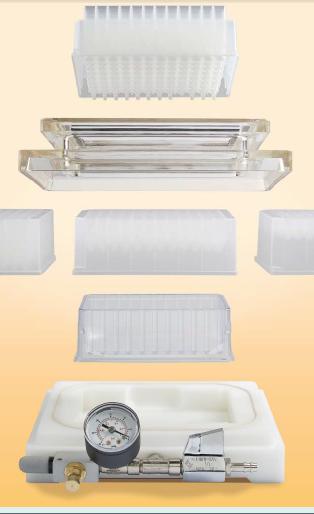SCIENTIFIC fact is nothing more than this year’s best guess, as the latest published research continually demonstrates. But there is always a little sadness when the fact that is being overturned is one that we hold dear, for reinforcing our own view of the world.
This was exactly my sentiment this week on reading that the co-called ‘hygiene hypothesis’ is not the explanation for the epidemic rise in allergies over the last few decades.
The hypothesis is commonly understood and widely recognised – modern living involves almost obsessive cleanliness and hygiene, with the result that humans are exposed to fewer microbes and so do not build up immunities.
According to Professor Sally Bloomfield of the London School of Hygiene and Tropical Medicine, this isn’t quite how it works. “The underlying idea that microbial exposure is crucial to regulating the immune system is right. But the idea that children who have fewer infections, because of more hygienic homes, are then more likely to develop asthma and other allergies does not hold up.”
Rather than being the result of excessive cleaning, the rise of these illnesses can be attributed to a loss of contact with what the researchers call ‘old friends’ of the microbe world, which in turn is down to the increased urbanisation of society rather than the effectiveness of modern vacuum cleaners.
Personally, I’ve long cherished the notion that too much cleanliness is a bad thing, just as I’ve cherished the belief – also supported by plenty of scientific literature – that a regular glass of red wine is good for the health. I will be watching with trepidation for the next paper to overturn that particular scientific fact.
I hope you find the LabHomepage website, and this weekly newsletter, useful. Comments and feedback are always welcome: news@labhomepage.com Please help us build our circulation base by forwarding this to any friends that might like it, and suggest they subscribe at http://eepurl.com/itOV2
best wishes, Russ Swan, editor, LabHomepage.com
SPONSORED MESSAGE
High Throughput Sample Clean-up
 The Microlute SPE sample preparation system from Porvair Sciences provides a faster, trouble-free alternative to cartridges for high throughput sample clean-up. Handling samples as small as 150ul the Microlute SPE sample preparation system helps you increase your assay sensitivity by providing pre-injection clean-up and concentration you can trust.
The Microlute SPE sample preparation system from Porvair Sciences provides a faster, trouble-free alternative to cartridges for high throughput sample clean-up. Handling samples as small as 150ul the Microlute SPE sample preparation system helps you increase your assay sensitivity by providing pre-injection clean-up and concentration you can trust.
As a complete package, including filter plate, collection plate, waste tray and manifold, the Microlute SPE sample preparation system offers all the advantages of automated and high throughput SPE sample preparation in a convenient microplate format capable of rapidly processing 96 samples in one go repeatedly and precisely.
Constructed from a single piece of moulded ultra pure polypropylene, the Microlute plate will not bend or distort because individual SPE cartridges do not have to be repeatedly plugged in and out. Using a proprietary sorbent slurry loading technique, Porvair has eliminated the channelling effects that often limit the performance of dry powder loaded SPE columns. Each well on a Microlute plate has an individual drain spout ensuring 100% sample transfer and zero crossover contamination. To recover dried or concentrated sample the Microlute SPE sample preparation system may be coupled to a Porvair MiniVap sample concentrator.
Microlute plates are available with a choice of sorbent and filter, and sample collection plates in a selection of well volumes (350ul, 1ml or 2ml), to optimally match your sample clean-up requirements.
For further information on the Microlute SPE sample preparation system please contact Porvair Sciences on telephone +44-1372-824290, email int.sales@porvair-sciences.com or visit the website at www.porvair-sciences.com
This week’s top stories: 04 October 2012
1. 3D imaging solves mouse genome puzzle
SCIENTISTS in Canada and the USA have used 3D imaging techniques to settle a long-standing debate about how DNA and structural proteins are packaged into chromatin fibres. A paper…
http://labhomepage.com/2784/nucleic-acid/3d-imaging-solves-mouse-genome-puzzle/
2. Electrocompetent cells promise higher electroporation efficiency
A NEW product from Amsbio, CloneCatcher Gold DH5G electrocompent E coli cells, exhibit extremely high electroporation efficiencies that approach the theoretical maximum…
3. Targeting oncology and neurology with next-generation sequencing
ROCHE says its new SeqCap EZ Library target enrichment products enable the enrichment of the whole exome or custom regions of interest prior to next-generation sequencing. The new…
4. High-content screening from low volumes of cells
A NEW array system for low-volume cell-based assays allows scientists to use a fraction of the cells, media, and reagents they have traditionally used, says its developer Curiox…
http://labhomepage.com/2760/assay/high-content-screening-from-low-volumes-of-cells/
5. Longer pipette tips for better labware access
INTEGRA has introduced a new extended length GripTip pipette tip available in non-sterile, sterile, filter and Green Choice configurations. The Long GripTip is designed to work with single…
http://labhomepage.com/2752/labware/longer-pipette-tips-for-better-labware-access/
6. Grant will fund HIV diagnostic test
A PROJECT to improve the determination of levels of new HIV (human immunodeficiency virus) infections, a challenge that has presented a significant obstacle to the effective monitoring…
http://labhomepage.com/2745/diagnostic/grant-will-fund-hiv-diagnostic-test/
7. Enclosures improve testing accuracy of thermally sensitive electronics
A NEW line of thermal test enclosures makes possible the accurate testing and processing of temperature sensitive electronic products with SP Scientific’s ThermoJet ES precision…
8. Selective microplate sealing with these innovative cap strips
A NEW range of cap strips to provide high integrity sealing of deep well plates (2ml, 1ml, and 350ul square well) along with Microlute 96 well solid phase extraction (SPE) and protein precipitation…
9. Most powerful electron microscope now with more resolution
A NEW objective lens option and a new scanning transmission electron microscope (STEM) version makes the Hitachi HT7700 the most powerful 120kV TEM currently available, says…
10. Microscopy comes to Manchester
ORGANISERS are claiming a major success with the European Microscopy Congress 2012, held in Manchester UK this week (17-21 September 2012). Traditionally considered a meeting rooted in…
http://labhomepage.com/2633/microscope/microscopy-comes-to-manchester/
